When to Use a Leash for Cat Socialization Outdoors
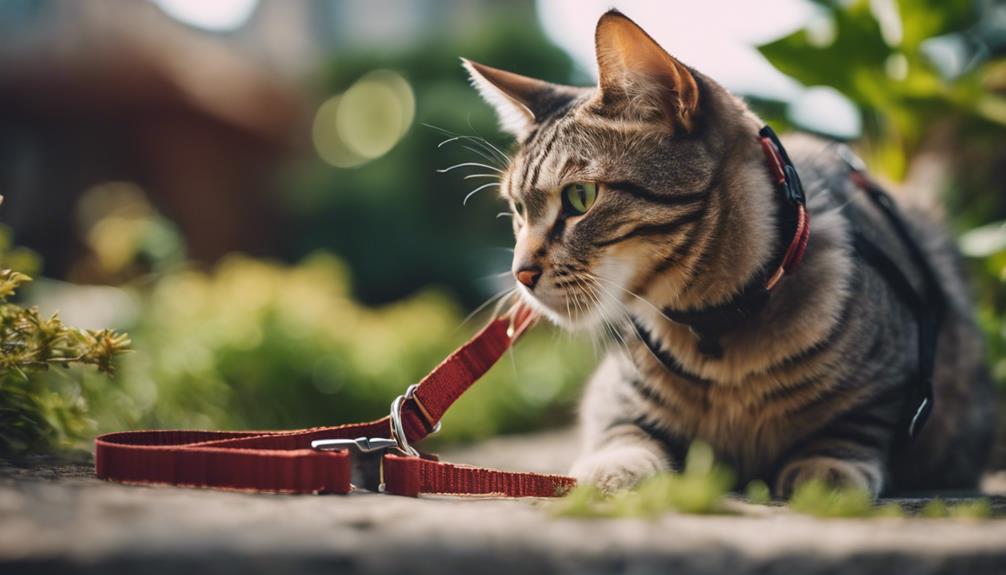
When it comes to socializing your cat outdoors, using a leash can be a valuable tool. Not only does it provide a sense of security and control, but it also helps keep your cat safe from potential dangers such as traffic, other animals, or getting lost.
By using a leash, you can gradually introduce your cat to the outdoors in a controlled manner, allowing them to explore new sights and smells while still being under your supervision. This can help build your cat's confidence and comfort level in outdoor environments, making future outings more enjoyable for both of you.
However, it's important to consider your cat's individual personality and comfort level with wearing a leash. Some cats may be more resistant to wearing a leash and may require more time and patience to adjust. Always use a properly fitting harness and leash designed specifically for cats to ensure their safety and well-being during outdoor adventures.
Remember to always supervise your cat while they are on a leash outdoors and be prepared to quickly intervene if they become anxious or stressed. With proper training and positive reinforcement, using a leash can be a beneficial tool for socializing your cat outdoors and creating special bonding experiences together.
Benefits of Using a Leash
Using a leash when socializing your cat outdoors can provide a sense of security and control, helping to facilitate positive interactions with the environment. Leash training is a valuable tool for behavior modification in cats, especially those who may be anxious or easily startled in new surroundings. By gradually introducing the leash in a safe and controlled environment, cats can learn to associate it with outdoor bonding and trust building experiences. This process helps establish boundaries while allowing the cat to explore and engage with their surroundings under supervision.
Behavior modification through leash training can help cats feel more secure and confident when outdoors, reducing the likelihood of them running off or getting into dangerous situations. Additionally, the leash provides a physical connection between the owner and the cat, creating a sense of closeness and strengthening the bond between them. Overall, using a leash for cat socialization outdoors can enhance the quality of the cat's experiences while ensuring their safety and well-being.
Choosing the Right Leash

When selecting a leash for cat socialization outdoors, it's crucial to consider both the length and material durability.
The length of the leash will determine how much freedom your cat has while keeping them safe, while the durability of the material ensures it can withstand outdoor elements and potential scratching.
These two factors are essential in choosing the right leash to facilitate a positive outdoor experience for both you and your feline companion.
Leash Length
Selecting the appropriate leash length is crucial for ensuring the safety and comfort of your cat during outdoor socialization. When considering leash control and exploring boundaries, opt for a leash that allows your cat enough freedom for balance while ensuring supervised play.
A leash that's too short may restrict your cat's movement and hinder their ability to explore their surroundings comfortably. On the other hand, a leash that's too long might compromise your ability to maintain control over your cat in unpredictable situations. A recommended leash length for outdoor socialization is typically around 6-8 feet, providing a balance between freedom and supervision.
Material Durability
For optimal outdoor socialization and safety, it's essential to choose a leash made from durable materials that can withstand various environmental conditions and your cat's activity level. When selecting a leash material, consider options like nylon or leather, known for their strength and resistance to wear.
Regular maintenance, such as cleaning and inspecting for any signs of damage, is crucial to ensure the leash remains in good condition. Additionally, look for features like strong metal clasps and reinforced stitching in the leash design to enhance durability.
Cat's Comfort and Safety
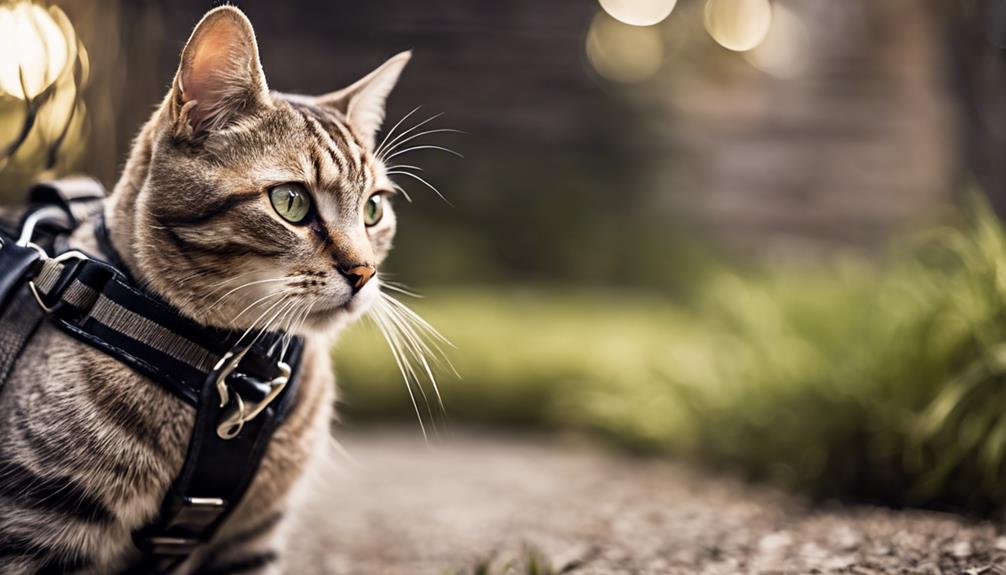
Ensuring a cat's safety when outdoors is paramount.
Comfort during exploration should also be a priority.
Proper leash training techniques play a crucial role in achieving both safety and comfort for outdoor adventures.
Safety Measures for Cats
To ensure the cat's comfort and safety outdoors, it's essential to consider key factors such as their physical environment and potential hazards. Outdoor hazards like busy roads, toxic plants, and aggressive animals can pose risks to cats.
Behavioral training plays a crucial role in preparing cats for outdoor adventures, helping them respond to commands and stay safe. Providing a secure harness or leash is vital to prevent escape attempts and ensure the cat remains under control.
Regular health check-ups and vaccinations are also important to protect the cat from potential diseases they may encounter outdoors. By taking these safety measures, cat owners can help their feline companions enjoy outdoor excursions while minimizing risks.
Comfortable Outdoor Exploration
When exploring the outdoors with a cat, ensuring their comfort and safety is paramount. Building outdoor confidence in cats can be achieved through supervised play sessions. These interactions not only provide mental stimulation but also create a bonding experience between the cat and its owner.
Controlled exposure to the outdoor environment allows the cat to explore at its own pace, fostering a sense of security. To ensure a comfortable outdoor exploration, consider the cat's personality and preferences. Some cats may be more cautious and require gradual exposure, while others may adapt quickly to new surroundings.
Leash Training Techniques
Incorporating leash training techniques is essential for ensuring a cat's comfort and safety during outdoor excursions. Positive reinforcement is a key aspect of leash training, rewarding the cat for good behavior and helping them associate the leash with positive experiences. This method encourages the cat to feel more comfortable and secure while on a leash.
Additionally, leash training can be a bonding experience between the cat and owner, creating trust and strengthening their relationship. By gradually introducing the leash in a calm and patient manner, the cat can learn to associate outdoor adventures with safety and fun.
Introducing Leash Training
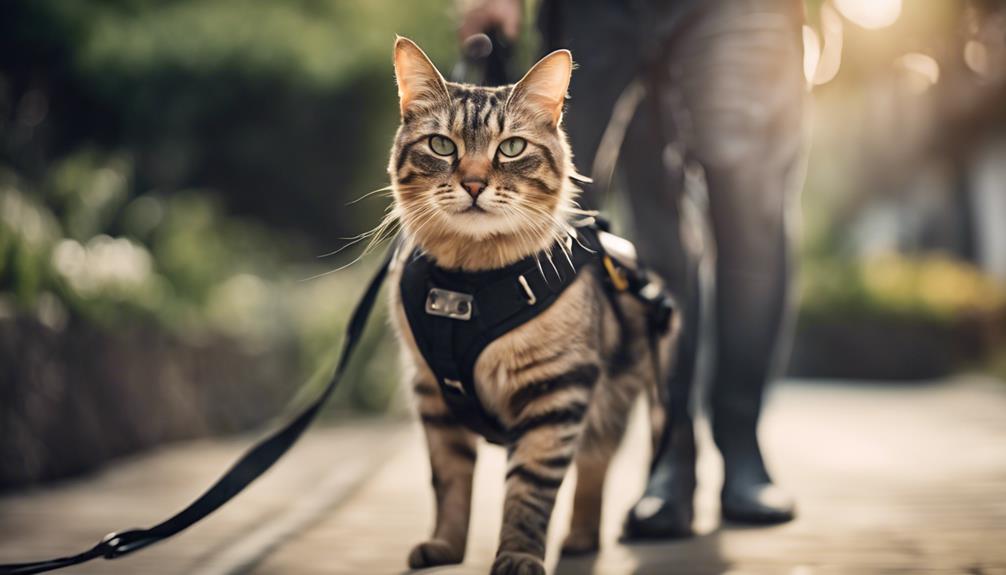
A gradual approach to introducing leash training is essential for successful cat socialization outdoors. Positive reinforcement and a slow introduction are key elements to consider when beginning this process. To help illustrate these points further, a table outlining the steps for introducing leash training is provided below:
| Steps to Introduce Leash Training |
|---|
| 1. Start indoors with the cat getting used to wearing the harness. |
| 2. Associate the harness with positive experiences like treats and play. |
| 3. Attach the leash indoors and allow the cat to drag it around under supervision. |
| 4. Practice walking short distances indoors before transitioning outdoors. |
| 5. Gradually move to outdoor environments, starting in quiet and familiar areas. |
Supervised Outdoor Exploration

To ensure the safety and well-being of your cat during outdoor excursions, supervising their exploration is crucial. Cats benefit from independent playtime outdoors, but supervision is necessary to prevent potential dangers. Here are some key points to consider:
- Engage in Interactive Outdoor Supervision: While your cat enjoys exploring, actively participate by engaging in interactive play or simply observing their activities to ensure they remain safe.
- Transition from Indoor Enrichment to Outdoor Activities: Cats accustomed to indoor enrichment activities may find outdoor exploration stimulating. Supervising this transition can help them adapt smoothly to the new environment.
- Monitor for Behavioral Changes: Outdoor activities can sometimes lead to changes in a cat's behavior. By supervising their exploration, you can observe any signs of distress or discomfort and intervene promptly.
High-Risk Environments
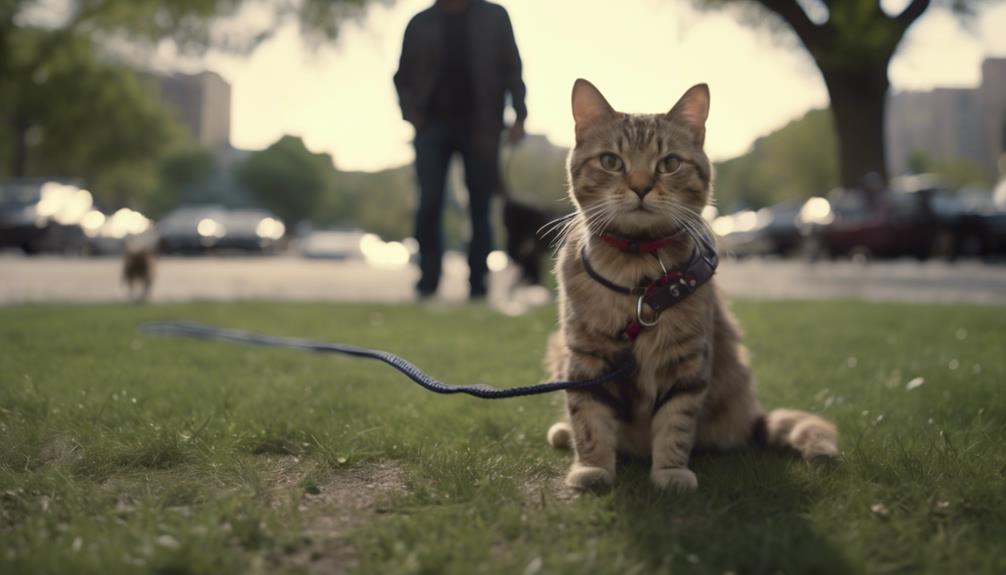
Supervising outdoor exploration for cats is essential, especially when considering high-risk environments where potential dangers may lurk. In such settings, risk management becomes crucial to ensure the safety of your feline companion. Controlled environments and supervised outings are key components when allowing your cat to venture outdoors. By utilizing training techniques and maintaining a watchful eye, you can mitigate potential hazards and create a safer outdoor experience for your cat.
| High-Risk Environments | Risk Management Strategies | Training Techniques |
|---|---|---|
| Busy streets | Use a secure leash and harness | Practice recall commands regularly |
| Areas with predators | Avoid these areas entirely | Train your cat to come when called |
| Poisonous plants | Learn to identify toxic plants | Teach your cat to avoid certain plants |
| Construction sites | Keep your cat away from such areas | Desensitize your cat to loud noises |
| High-traffic areas | Choose quieter routes for walks | Reward calm behavior outdoors |
Transitioning to Off-Leash Activities
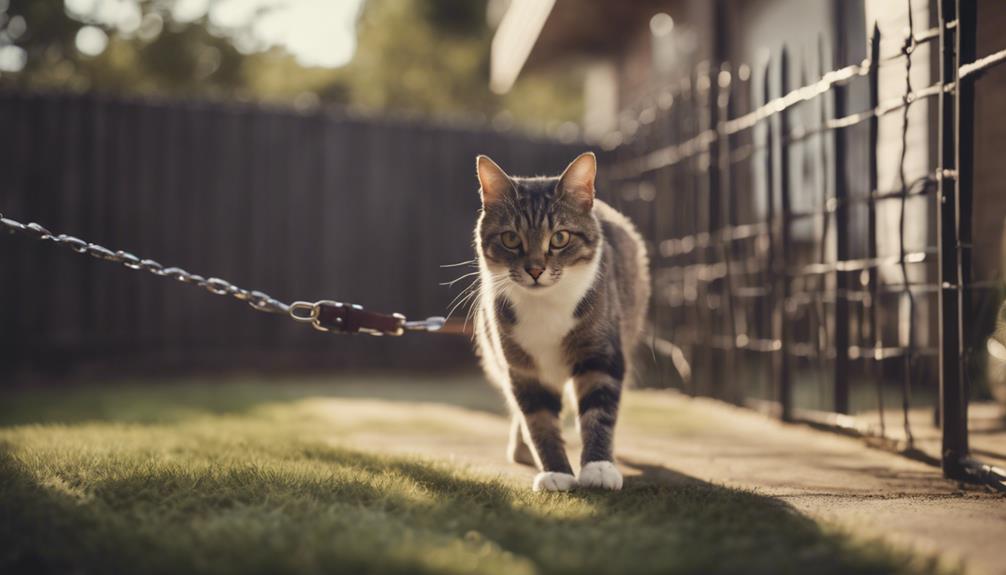
Transitioning a cat to off-leash activities requires gradual acclimation to the new environment and careful monitoring of their behavior and response. Off-leash training can be a rewarding experience for both the cat and its owner, fostering a deeper bond and providing enriched opportunities for exercise and exploration.
Here are some key tips to consider when transitioning your cat to off-leash activities:
- Start Indoors: Begin by allowing your cat supervised playtime off-leash indoors to get them accustomed to the freedom of movement without the constraints of a leash.
- Choose a Safe Outdoor Area: When ready to venture outdoors, select a secure and enclosed space free from potential hazards where your cat can explore safely.
- Monitor Closely: Keep a close eye on your cat's behavior during off-leash activities, watching for signs of discomfort, fear, or aggression. Always be prepared to intervene if needed to ensure a positive experience for your furry friend.
Frequently Asked Questions
Can Using a Leash Hinder a Cat's Ability to Explore and Roam Freely Outdoors?
Using a leash for cat socialization outdoors can provide boundaries while allowing freedom. Proper leash training is essential to ensure the cat's safety and enjoyment. It can enhance the outdoor exploration experience and establish safe practices.
Are There Any Specific Training Techniques for Cats Who Are Resistant to Wearing a Leash?
When resistant cats need leash training tips for outdoor socialization, understanding cat behavior is crucial. Patience, positive reinforcement, and gradual exposure help build comfort. Consistency in training methods and respecting the cat's pace are key.
How Do You Prevent a Cat From Getting Tangled or Caught on Objects While on a Leash?
To prevent tangling and ensure safety while allowing outdoor exploration and freedom, it's crucial to supervise the cat closely, choose a proper-fitting harness, avoid densely cluttered areas, and regularly check for any potential hazards that could entangle the cat.
Are There Certain Breeds of Cats That Are More Suited for Leash Training Than Others?
Certain breeds of cats, like Abyssinians and Bengals, show more compatibility with leash training due to their active nature. Personality traits such as curiosity and sociability can make training easier. Positive reinforcement methods work best.
Can Using a Leash Outdoors Impact a Cat's Behavior or Temperament in Any Way?
Using a leash for outdoor feline socialization can positively impact behavior. Leash training enables safe exploration and interaction, enhancing a cat's confidence. This practice not only fosters outdoor enrichment but also aids in behavior modification for a well-rounded pet.











